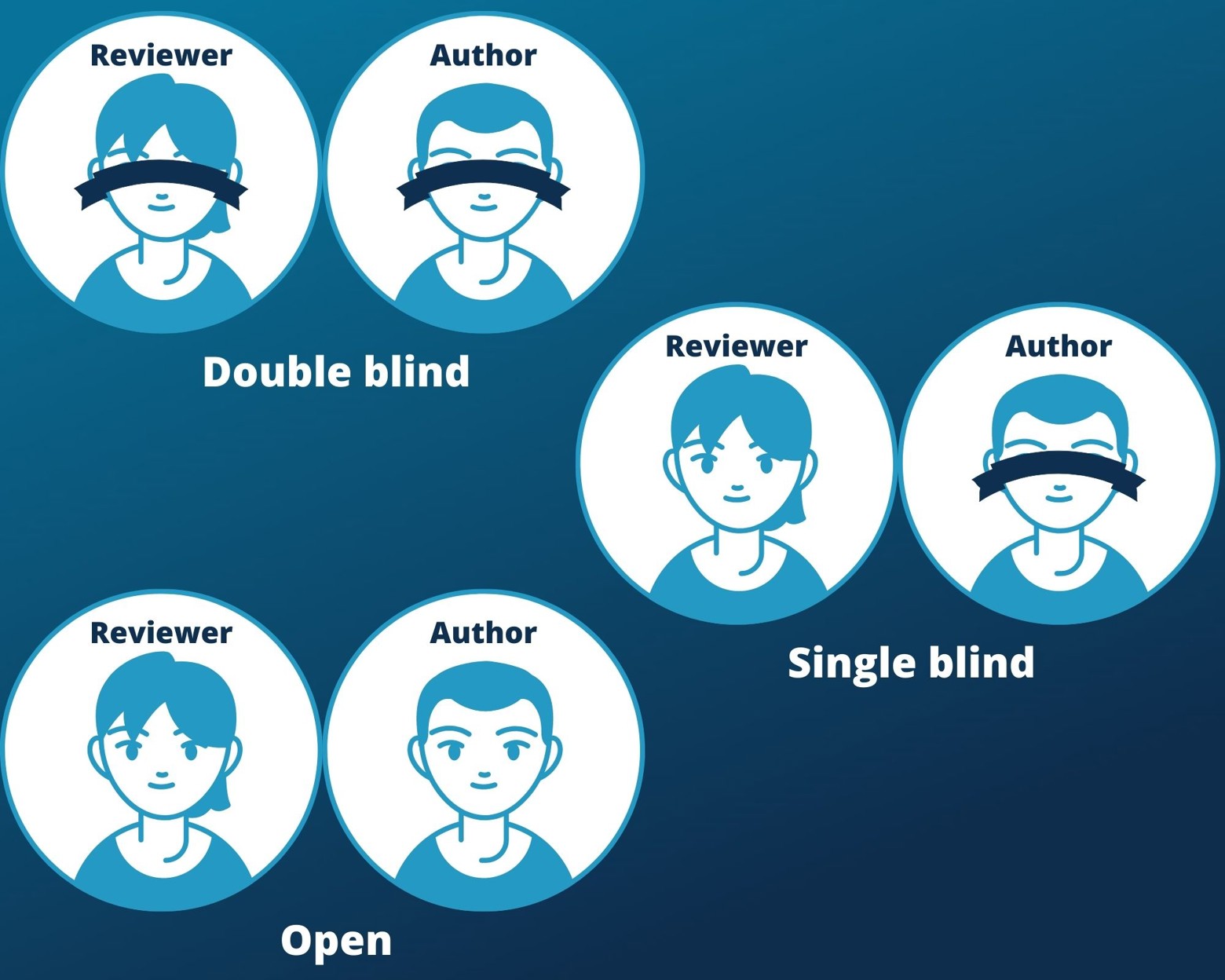Single-Blind Vs. Double-Blind Peer Review - Simple Guide
While the first scientific journal was launched in 1665, the peer review process began in the 1970s and is often considered to be at the core of the scientific method. Peer reviews provide legitimacy and prestige to academic conferences and publications, and are essential to maintaining the trust between scientists and the public. In order for an academic conference to be considered legitimate and to provide value to both presenters and attendees, there must be a thorough peer-review process.
Peer review is defined as “a process of subjecting an author’s scholarly work, research or ideas to the scrutiny of others who are experts in the same field.” (source)
The main function of any peer review process is to help conference organizers and journal editors choose which papers to publish and present. Reviewers must assess the technical accuracy and significance of the research in relation to the interests and expectations of the audience considered. The peer review process encourages researchers to meet a high set of standards expected by their peers and those making data-driven decisions based on their work. It ensures that information presented at academic conferences and published in academic journals are well-researched, backed by data, and not influenced by personal bias or opinion.
Most conference organizing committees have a Program Chair that leads a sub-committee responsible for establishing and conducting the process of collecting and reviewing submissions to be published and presented at that conference. This person will be tasked with deciding which type of peer review process they wish to undertake.
There are three main peer review processes – single-blind, double-blind, and open peer reviews. With single-blind reviews, the researchers are not aware of the identity of the person reviewing their work, but the reviewers know the identity of the authors. Double-blind reviews mean that the authors and reviewers are both unaware of the others’ identity. In open peer reviews, all parties are identified to one another.
In 2017, the Institute of Physics introduced a temporary option for researchers submitting their work to two medical journals to be reviewed under the double-blind process rather than the traditional single-blind review. About 20% of researchers chose the double-blind review. The IOP found that while most researchers preferred the double-blind review process, the rejection rate for double-blind reviews was much higher than it was for single-blind reviews. According to the IOP, 70% of submissions were rejected under the double-blind review process, while 50% were rejected under the single-blind process.

What is a single-blind peer review?
The single-blind peer review is the most conventional and common peer-review process used by science conferences and journals today. With a single-blind peer review, the author’s identity and institution are known to the reviewer, but the reviewer’s identity is not known to the author.
The single-blind review process has pros and cons.
The pros:
- By allowing the reviewer to remain anonymous, they are able to be completely honest in their analysis of the research, without concern of backlash from the scientist submitting the paper.
- It is believed that knowing which institution the author is working from allows the reviewer to consider the context of their previous work.
The cons:
- The single-blind review process leaves room for bias. There is concern that by knowing the identity of the author, that person’s history could overshadow and taint the evaluation of the work currently being reviewed. For example, if the author recently published groundbreaking research, it could influence the reviewer’s perspective on the current project.
- Another concern is the possibility of bias on non-scientific components of the paper. For example, when the reviewer knows the identity and institution of the author, they could become biased about the legitimacy of work by authors from a certain country, gender, ethnicity, or academic institution. While this type of bias is not accepted in the academic world, the single-blind review process makes it more difficult to eradicate.
What is a double-blind peer review?
With a double-blind review, the identity of the author and the reviewer are unknown to one another. This type of peer-review is increasing in popularity because it removes the possibility of bias based on gender, ethnicity, nationality, institution or previous accomplishments of the author.
The Proceedings of the National Academy of Sciences (PNAS), a peer-reviewed journal of the National Academy of Sciences (NAS), conducted a study comparing the results of peer reviews of the submissions to the 2017 Web Search and Data Mining Conference. Each submission was reviewed under both the single-blind and double-blind processes. The study showed that single-blind reviews provided a significant advantage for authors who were well-known in their fields, or came from prestigious institutions.
While the double-blind process does remove the potential for bias, some argue that the identity of the author provides the reviewer with historical context that helps them develop an assessment that is more informed than a single-blind review. They claim that without knowledge of their identity, the review suffers.
How to conduct a single or double-blind peer review
When planning a scientific conference, as part of the organizing committee you must decide if the review process will be single-blind, double-blind, or open.
With a single-blind review process, submissions are distributed to the selected reviewers with the author’s name and institution attached. The reviewer completes their assessment of the research, and provides it back to the organizing committee. The organizing committee then shares the analysis with the author, without revealing the identity of the reviewer.
With a double-blind review process, the author’s identifying information must be stripped from the piece before it is submitted to the reviewer. The reviewer assesses the piece without knowledge of where the research was conducted and who prepared the report. The research is evaluated and submitted back to the conference organizers who will re-attach the piece to the author’s identifying information, and share feedback with that author.
This process can be done manually, but to minimize room for human error, it is best if you can use a peer-review software that gathers the submissions, removes identifying information, distributes the papers, and manages feedback from reviewers automatically.
An alternative: Open review
In addition to single-blind and double-blind reviews, the academic community also uses the open review process at times. This process allows both authors and reviewers to be aware of one another’s identity, offering more transparency than either process previously discussed here.
As with the previous options, there are pros and cons to the open review process.
The pros:
- Those who favor an open peer review process argue that it can help expose possible conflicts of interest between reviewers and authors.
- It is believed that making the identities of all parties known encourages reviewers to be more critical in their assessment of the science behind the article and that the feedback provided will be more thoughtful if the reviewer’s name is attached to the review.
- Some argue that the open review process is the only ethical way to conduct peer reviews because it is unfair for one party’s identity to be known but not the other.
The cons:
- Publishers worry that open peer review processes make it more difficult to find reviewers, as reviewers are often hesitant to participate in an open review process.
- There is also concern that the process increases the potential for nepotism, and allows for well-known authors to receive unconscious bias that their work is automatically superior to that of other scientists.
- There is also concern that the open review process will result in weaker peer reviews, as reviewers are reluctant to provide direct feedback when the author knows who is evaluating their work.
Software for peer reviews
While the peer-review process was conducted manually for decades, current technology has made it possible to automate many elements of the single-blind, double-blind, or open peer review processes. This automation significantly reduces the workload tasked to volunteers who sit on conference organizing committees, and eliminates the potential for human-based errors.
By turning to simple, user-friendly tools like the Fourwaves abstract management software, you can pre-emptively determine which identifying information is visible to both authors and reviewers, gather reviewer information, and assign them submissions while abiding by the specifications of the peer review process you’ve selected.
Our platform also allows reviewers to declare a conflict of interest if needed. It is a convenient way to manage research submissions, provide an error-free review process, and keep all the information related to conference submissions organized in a single location.
Conclusion
The peer-review process is fundamental to the continuity of academic conferences and publications that are trusted and reliable. There is no perfect process, so it’s important to consider the pros and cons of each type before choosing one
We hope that this article has been helpful, let us know if you have any questions or comments.


